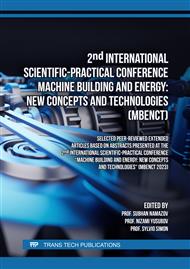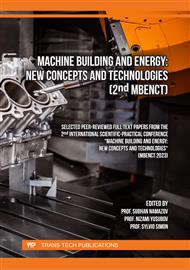p.3
p.11
p.19
p.29
p.37
p.45
p.51
p.61
Analysis of a Longitudinal Crack in a Pipeline Loaded with a Certain Internal Pressure, with Recommendations for Further Operation
Abstract:
In fracture mechanics, there is a rather complex theory associated mainly with the choice of model and the correct choice of fracture criteria. There may be models and criteria for the fracture mechanics of bodies with stable and unstable properties, or the choice of a fracture model for an viscoelastic material. When calculating, you can choose the critical crack opening criterion or the local energy criterion. But in practice, it is possible to carry out more simplified initial theoretical calculations, which can be performed by an engineer who has the necessary theoretical knowledge and practical experience, for example, in the operation of pipelines. If the material is considered completely solid, then the interatomic bonds are destroyed. On this basis, the theoretical strength limit of the material is introduced. In this article we study normal tensile cracks, since this is the most dangerous situation (when the tensile stress is perpendicular to the plane of the crack). The main goal is to reduce a real crack detected on an object to simple standard solutions. That is, to imagine it as a crack that has a solution. This means that we must calculate the load with a margin and all our assumptions must be related to the safety margin. In reality, cracks are the most unpredictable (unpredictable shape, unpredictable location).
Info:
Periodical:
Pages:
3-9
Citation:
Online since:
April 2024
Authors:
Price:
Сopyright:
© 2024 Trans Tech Publications Ltd. All Rights Reserved
Share:
Citation:



